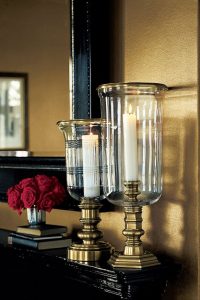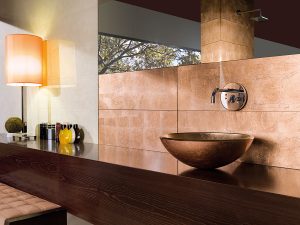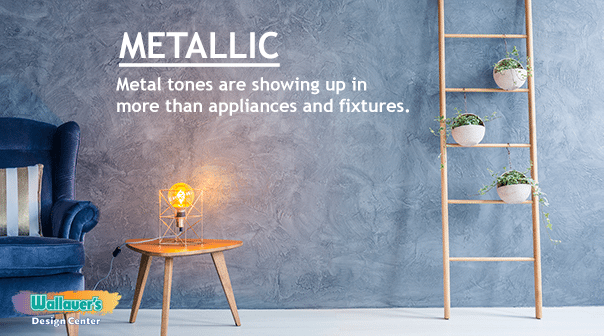From stainless appliances and chrome fixtures to pewter lamps and copper accents, metallics are everywhere in home décor. But they’re also prevalent in paint and coatings, with finishes ranging from shiny and reflective to hammered and burnished.Perhaps you’ve never considered painting your walls or ceilings in a metallic coating, but the look is interesting and high-end. It’s also available in a wide selection of colors and sheens. Many paint companies offer not only the typical metal tones (silvers, golds, brasses, coppers), but also every hue under the sun and in sheens ranging from brilliant high-gloss to satin, semi-satin, and matte.
1. Know When To Hire A Pro:

While there are many one-step metallic coatings on the market, but some of the more elaborate finishes require additional steps, coatings, and applicators to achieve. To save time, labor, and potential problems, consider hiring a professional painter or decorative artist. Some professionals actually specialize in metallic finishes and can help you decide which is best for your budget and space. For ceilings, in particular, go with a pro, particularly when it comes to some of the more elaborate finishes.
2. Think About A Dimensional Finish:

In addition to contemporary decors, lighter woods work well in cottage, country chic, farmhouse, coastal, traditional, transitional, and even industrial stylings. Among the light woods that are popular are white oak, maple, bamboo, and a range of light-gray hardwoods, from lightly weathered oaks to silvery grays.
3. Pay Attention To Prep:

Proper surface preparation is key to achieving a successful metallic finish installation. Before applying any coating to the wall, make sure it’s free of holes, nicks, gouges, and other imperfections. Fill these areas with a patching product or joint compound and, once it’s dry, sand the surface to a smooth finish. Run your hands over the walls to determine whether your eyes are missing any flaws. You’ll likely need to prime the walls, too. Check with your local paint dealer to see which primer works best with the metallic finish you’ve chosen. After applying the primer, make sure it’s thoroughly dry, then sand down any imperfections that might have occurred as a result of drips or overlaps.
4. Consider The Space:

Because of their light-reflecting quality, metallic finishes are ideal for rooms that have limited natural light. Because of that same quality, metallic finishes can also make a room appear larger—an illusion that works to even greater effect when only one wall, at the end of a room, is painted in the finish. Accent walls in general are well suited to metallic finishes. Possibilities include walls with fireplaces or artwork; walls with unique architectural detailing, such as a recess or a dramatic pitch; and small walls, such as those under a stairway or in an alcove. But whole rooms can be painted in metallic finishes, too. If you take this route, consider color and sheen carefully, or the finish could end up being overwhelming. For a subtler look, consider a metallic glaze, with the bottom coating and top glaze in the same or similar colors, and a satin or matte finish. Try not to deviate from your established color scheme.
5. Don’t Stop With The Walls:

Metallic finishes are increasingly showing up on “the fifth wall”—the ceiling. Especially popular are metallic glazes, which create an almost ethereal look, and metal-polished Venetian plasters, which offer high sophistication. For an even more glamorous look, consider adding a metallic ceiling medallion, gold leafing, or gilding. These last two treatments might be applied to a medallion, to the ceiling itself, or maybe even to crown molding in the room.

 Interior Paints
Interior Paints Exterior Paints
Exterior Paints Primers
Primers Stains & Clears
Stains & Clears
 Paint Brushes
Paint Brushes Paint Roller
Paint Roller Paint Trays & Liners
Paint Trays & Liners



